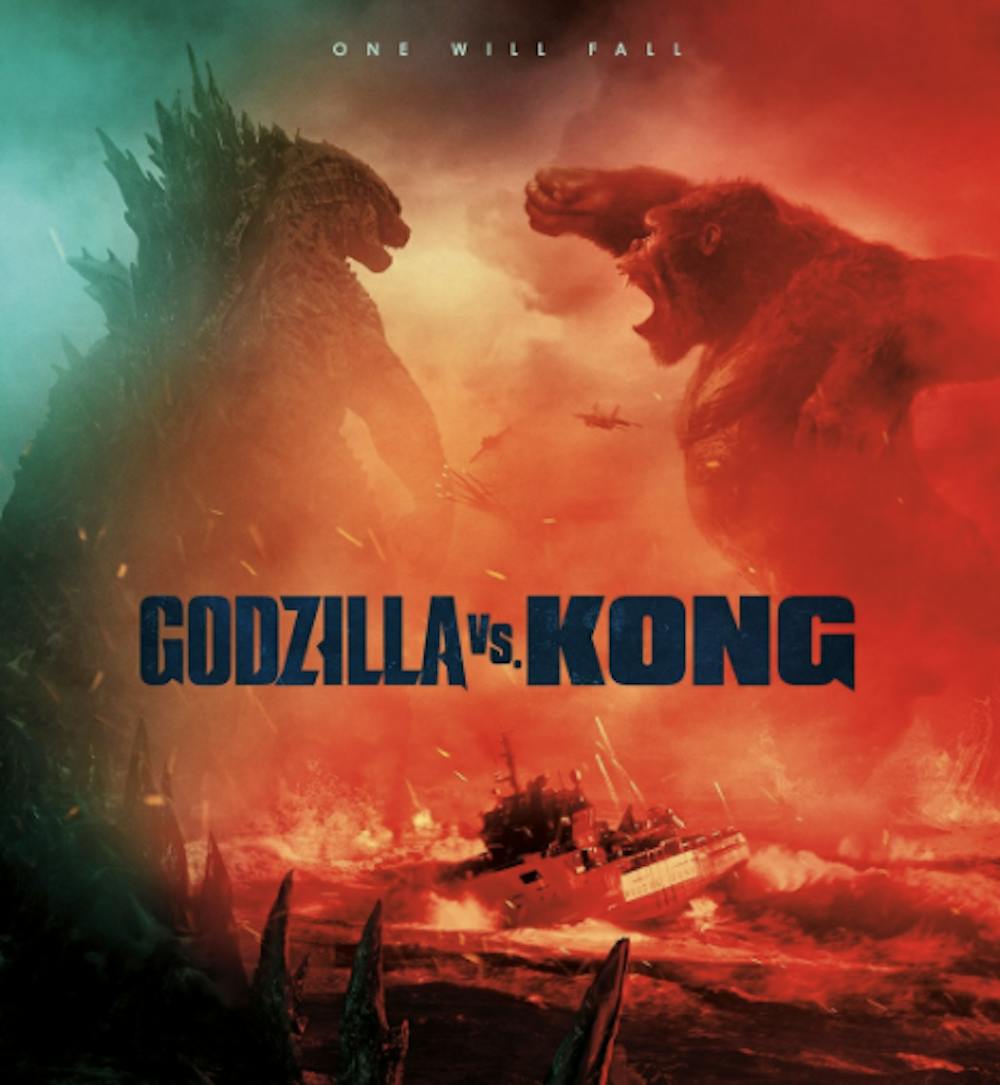Godzilla vs. Kong is the first major blockbuster of 2021. In fact, it’s the first major blockbuster there’s been in a while. With the dreary dreamlike existence that COVID-19 has put us in for the past year, it seems fitting that the first major film to come out has a giant gorilla socking an atomic-fire breathing lizard in the face. Godzilla vs. Kong is a jubilant, campy rallying cry for the devastated American film industry hoping to refill theater seats and box-office pockets, as the light at the end of COVID-19’s long tunnel is finally in sight.
Godzilla vs. Kong is the most recent installment in Warner Bros and Legendary’s “MonsterVerse” which began with 2014’s Godzilla. The MonsterVerse is similar to the shared universe that the Marvel films operate in, except with giant monsters. The MonsterVerse has never drawn as much attention as other shared-universe film series because the focus has largely been on the monsters rather than actual people. The main draw of a movie is character and plot. There is only so much emotion that a giant lizard can articulate.
The latest film attempts to remedy this by having an interconnected A and B plot running between the monster fights. The A plot involves Dr. Nathan Lind (Alexander Skarsgard) using King Kong to find a pathway to the center of the earth in order to find an experimental element for the mysterious company Apex Cybernetics. Along the way, he gradually becomes attached to Dr. Illene Andrews (Rebecca Hall) and her adoptive daughter, who are Kong’s primary caretakers.
The B plot involves teenager Madison Russel (Millie Bobby Brown) tracking down the mysterious podcaster Bernie Hayes (Brian Tree Henry), who is a conspiracy theorist working at Apex Cybernetics who believe that they are behind Godzilla’s recent erratic actions.
The plot present in this movie is better than its predecessor’s, Godzilla: King of Monsters. The characters play well off of each other and are enjoyable to watch. The focus is mainly on humor, with dramatic scenes being few and far in between. Strangely, the scenes that show the best acting are the CG (computer-generated) monsters glaring and snarling at each other. There was a great amount of detail put into the facial structures of the monsters this time around and it shows in the animation.
Overall, the plot isn’t great but it’s serviceable. It’s good enough to keep your focus between the action scenes and give some gravity to the fights. It’s more of a narrative device to move the focus through the set pieces. The best way to explain it is that the narrative is good, but the characters aren’t, so the story is O.K.
This brings up the main draw of the movie, the special effects. Kaiju (Japanese giant monster movies) have always been primarily associated with their special effects. The first movies of the genre are known for having men dressed in elaborate (but goofy-looking) rubber suits slapping each other. Now the majority of kaiju films are done with some of the most elaborate CG in the market. When Pacific Rim came out it sent out shockwaves for its use of CG and arguably influenced Warner Bros to start the MonsterVerse.
Godzilla vs. Kong continues this trend. The entire movie is a visual spectacle, the type of which has not been seen since Avengers: Endgame, which is probably why it’s doing so well in the box office right now. The monsters look arguably the most realistic they’ve ever been and the fights have a slow, lumbering weight to them that sells the size of the creatures.
The sound design is on par with the visuals. Every impact is meaty. You can hear the ground rumble and the skyscrapers groan. However, the score is largely forgettable. There are a few classic rock songs played on top of King Kong’s scenes that are memorable, but the orchestral score just turns into the background noise. Godzilla: King of Monsters did better than Kong vs. Godzilla in this regard. It remixed tracks from classic Toho Godzilla movies and played them during pivotal scenes. Arguably Godzilla vs. Kong could’ve done the same and played off the nostalgia, but it missed the opportunity.
Godzilla vs. Kong isn’t a movie that set out to get awards or progress cinema. It’s a movie that came out to fill seats and give viewers a nice spectacle. Movie chain AMC has recently begun re-investing in its theaters due to the audience the movie has drawn in. Godzilla vs. Kong might be the movie that resuscitates the going-out-to-the-movies experience.






